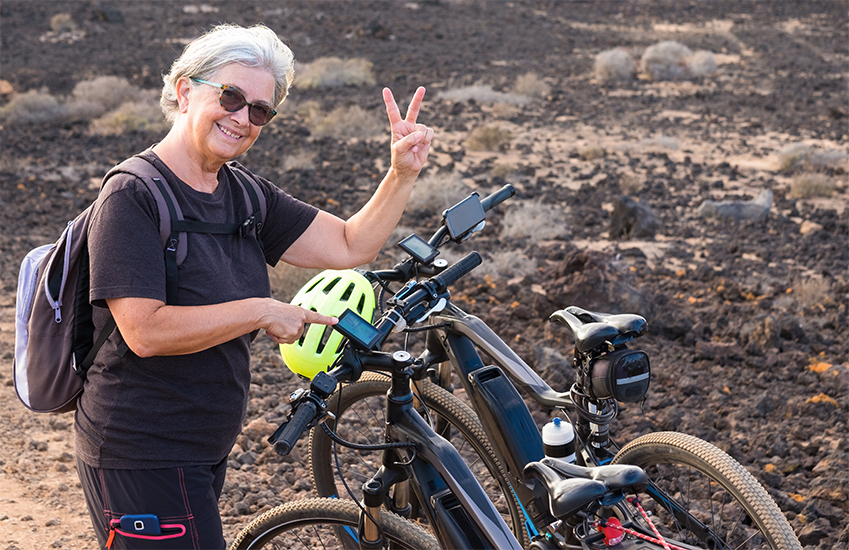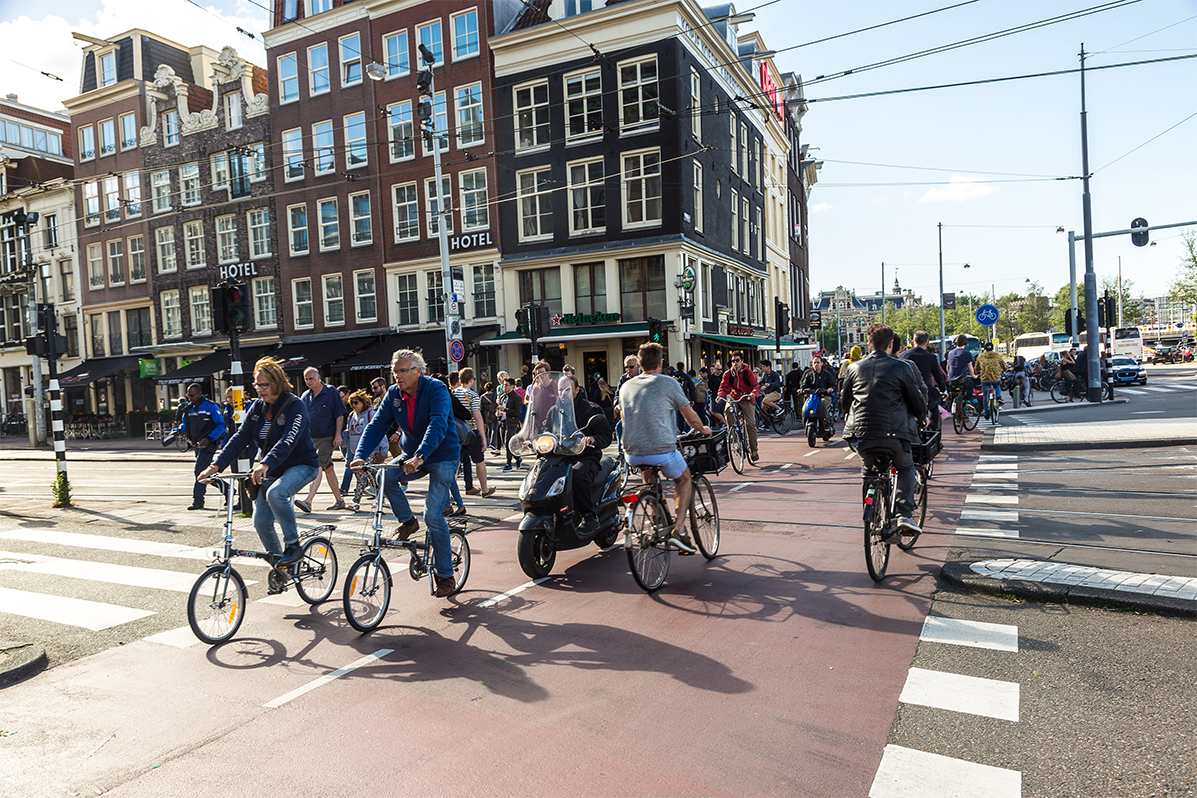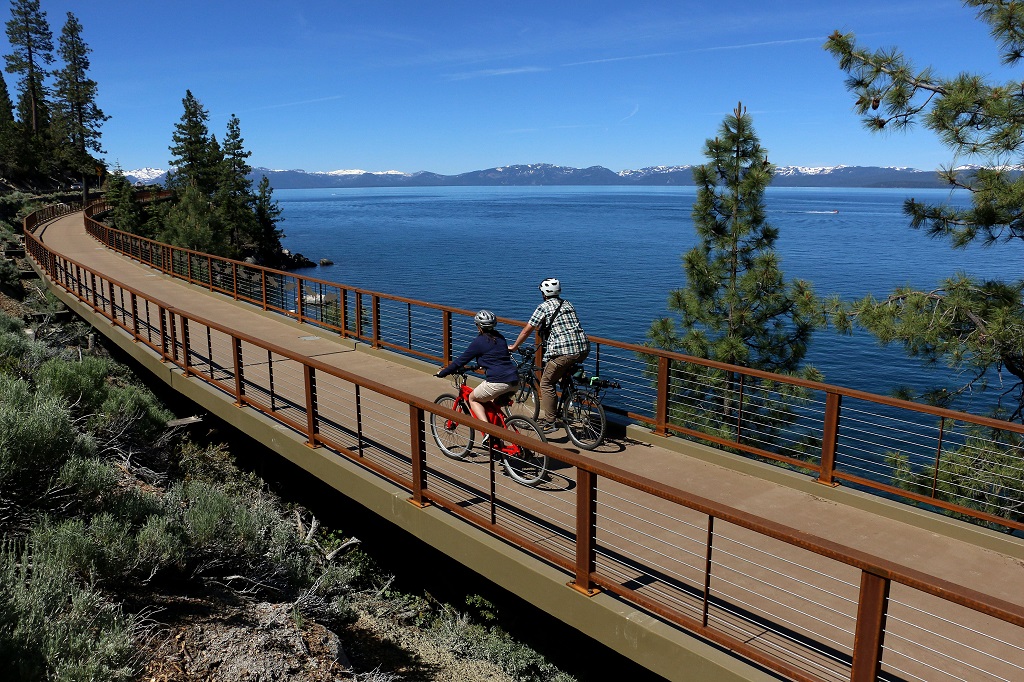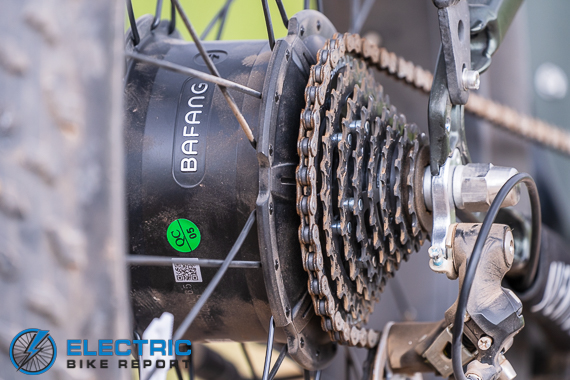Ask Electric Bike Report: Are e-bikes safe for seniors?

The team at Electric Bike Report fields a surprising number of questions on whether electric bikes are safe for seniors and older people.
We get so many of these questions, that we actually tailor-made a list of our recommendations of the best e-bikes for senior riders.
But to answer the question in short: Yes, e-bikes are safe for seniors. Not only are they safe, they offer a host of health benefits from low-impact physical exercise to boosts in mental and cognitive health.
But it makes a lot of sense that we get this question so often — cycling, at least before e-bikes grew popular, hasn’t always been the most friendly sport for older demographics. It’s an activity with a reputation for hard physical exertion; one where pedaling unaided up hills and over long distances, among other things, could be obstacles unkind to aging bodies.
That paradigm quickly changed as e-bikes gained popularity.
Why are e-bikes safe for seniors?

At their core, an electric bike is a normal pedal bicycle with a little (or sometimes a lot) of added boost courtesy of a small motor and battery.
The first step to riding them safely depends on whether you can ride a traditional bike safely, and, as the old adage goes: “Once you learn to ride a bicycle, you never forget.” There are some additional considerations to keep in mind for safe operation of an e-bike, but we’ll get more into that later.
Scientific studies have proven that, despite the help from the motor, e-bikes provide a quality low-impact exercise with very measurable health benefits. Some studies cited evidence that e-biking might even make people exercise more often thanks to the lower perceived exertion and heightened enjoyment.
There’s also evidence of cognitive and mental health benefits in seniors who e-bike.
“Our research demonstrated that the wider therapeutic benefits of cycling outdoors need to be considered. Our participants reported improvements in confidence and self-esteem. The E-bike enabled them to explore their local area and interact with people and the natural environment secure in the knowledge that they could rely on powered assisted support to get them home safely and stress-free,” wrote researchers conducting a 2019 study at Oxford University.
I like to think that e-bikes are democratizing cycling. That small motor makes it easier for people who might be less confident on a traditional bicycle to get out and do things they’d previously not been able to do.
Things seniors should know about e-bikes before buying

E-bikes span the full spectrum of bicycles, from high-performance racers built for speed and efficiency to three-wheeled trikes designed to take the balancing act out of cycling. And, like a car, their speed and power vary depending on model, intended use and how much you’re willing to spend.
You’ve got to do some research and, most importantly, evaluate and know your goals, wants and needs before you go and spend money on an e-bike.
Think long and hard about what you want to do with the bike — are you wanting to get fitter? Get around town or your neighborhood? Get out for some fresh air? A mix of all of them? These questions are perhaps the most important, and the answer will guide you towards what style of e-bike is best for you.
The next most important question is if you have any mobility issues or physical considerations you need to keep in mind. We often hear from older riders who have a tough time swinging their leg over the high top tube of a traditional bicycle or who are worried about being able to touch the ground while seated when they come to a stop. There are specific bike designs that help alleviate these issues, like step-thru e-bikes and electric cruisers.
Like buying a car, you use all the above information to select a make, model and trim level that fits your needs. If you need help getting started, Electric Bike Report has a handy guide that’ll help you find your bearings.
It is important to note that e-bikes are considerably heavier than a traditional bicycle. They’re not nearly as heavy as a motorcycle, but it’s not uncommon to see a 60 lb or even 70 lb e-bike (batteries are extremely heavy). Pay attention to weight, but don’t let it overwhelm your decision making process. The motor will help cancel out that weight while riding uphill, and well designed e-bikes typically handle their weight very well in corners and at low speed.

Choosing the size and power of the motor is another very important consideration. There are several types of e-bike motors, but the two most common are the rear hub motor and the mid-drive system. Mid-drives are the higher-end option and typically require less power (measured in wattage) to produce considerable torque and speed. Hub motors are the less expensive option and are extremely common on entry-level and affordable e-bikes. They typically have much higher wattage ratings than mid-drive motors but produce similar power.
Lastly, always remember that an e-bike is still a bicycle. You will likely get a workout (whether you notice or not) and you should be going speeds that are comparable or slightly higher than traditional bicycling speed. Safety is paramount, wear a helmet and at the end of the day it’s up to the rider to accept risk and ride carefully. Start conservatively and you’ll be a seasoned e-biker in no time.
E-bikes are a great option for seniors
It’s hard to understate just how popular e-bikes have become among seniors.
Manufacturers and retailers both say seniors are the quickest growing segment of e-bike buyers, most of whom haven’t pedaled a bicycle in years. E-bikes give seniors the ability to flatten hills and make longer-distance bike rides much more manageable, all while still reaping many of the health benefits that go along with pedaling a traditional bicycle. You get the power to choose just how much effort you put into the bike.
Just like anything, be smart about what bike you choose. A high powered bike known for speed may not be the best option for a person concerned about balance. But no matter your circumstances, it’s incredibly likely there’s an e-bike built to suit your needs.
Whether you’re a senior with a long background in cycling or someone looking to relive their days lapping the neighborhood on a one-speed, welcome to e-biking.



Great article. Now, if only I can find a rack/carrier so that GrandMa and GrandPa can more easily load their ebikes:
https://www.youtube.com/watch?v=CJNbI_N0oig
*
A couple of considerations for Seniors buying an electric bike –
Falling from a 2 wheel bike puts you at risk of hip injury so consider a smaller wheel size than the common 26 inch wheel. Be careful of throttle types. We have seen incidents where the thrumb throttle has been snagged getting on & off a bike causing the bike to lurch forward & throwing the rider to the ground. In a couple of incidents requiring an ambulance & hospitalization. In one incident the rider had removed his helmet & of course hit his head when he lost his footing. Many E Assists can be set up as a “pedal first” before thr throttle will engage & this might be advisable for you. The disadvantage is it can mean a harder time getting started if you are on an incline. For safety, comfort, not getting buzzed by passing drivers consider a recumbent trike, they really are the best of both worlds when it comes to cycling.
I’m 70 and have been riding bicycles and motorcycles for over 50 years. I’ve lost interest in motorcycles and currently ride a class 3 Trek Allant +8S ebike with a step through frame. It works great for me but would be even better with a throttle for when I get tired which happens sooner than it used to. I don’t understand why some ebike and non powered bike riders are so prejudiced against throttles on ebikes. The other nice to have feature would be a suspension front fork since the roads around here in NJ are very poorly maintained.
Hi Jeff, I’m 79 and a life-long bicyclist. I’ve got over 5 years and 10K on a Pedego Stretch (heavy cargo bike) that has a throttle. There is no thumb protrusion, one must use finger and thumb on right hand to activate. I never ride the throttle, I always pedal. However where the throttle is most helpful is starts; especially at busy intersections or where the start is uphill. As a safety factor, I always keep a couple fingers on one of the brake levers as brake lever pull disconnects power from battery to motor. In using throttle, it’s only 1 or 2 seconds at start up is sufficient and I’m pedaling and releasing the throttle. The only other time I throttle is if I get an unexpected, very short steep section I may use it for just a few seconds, rather that go through downshifting or adding assist level where the added help will only be needed for a few seconds. Also, I have a Brompton folding, non-electric. I’m considering replacing it with a e-bike version. My only resistance is there is no throttle. I’m thoroughly in favor of throttles, but, only for those very brief moments of boost needed as explained above. I don’t like to see someone zipping down a trail or street running only on throttle and believe this is irritating to standard bicycles when someone is invading their environment running on a throttle.
At last, an electric bike rack for transporting those heavy ebikes! I sure hope Electric Bike Report tests one of these out to see if it’s all that it’s hyped up to be:
https://www.saris.com/product/door-county
*
Hi Bicycle Comrades do any of you have any knowledge or experience with the electric trike it’s been around since 2003 it’s all steel which I like. It’s the DWMEIGI G-1703 Fat Trike 750W” it used to be called They Day Win it sells for
$2.45oo All the reviews are very positive.
Have a good week 😃 Thanks Carmen